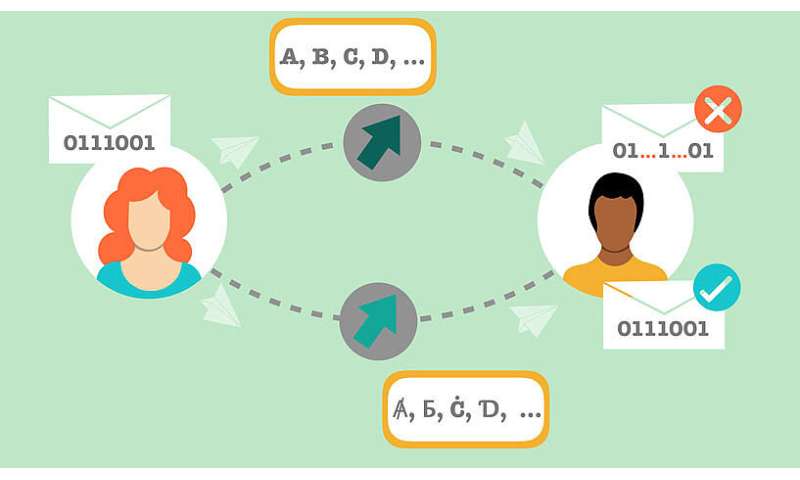
Quantum information relies on the possibility of writing messages in a quantum particle and reading them out in a reliable way. If, however, the particle is relativistic, meaning that it moves with velocities close to the speed of light, it is impossible for standard techniques to decode the message unambiguously, and the communication therefore fails.
Thanks to the introduction of a new method, researchers at the University of Vienna and the Austrian Academy of Sciences have developed reliable decoding of quantum messages transmitted at extremely high speeds. The results, published in the journal Physical Review Letters, opens up new possibilities of technological applications in quantum information and quantum communication.
Imagine the following situation: Anna and Bill want to exchange a message by using a property of a quantum particle, say the spin of an electron, which is an intrinsic form of particle's rotation. Bill needs Anna's message as quickly as possible, so Anna has to send the electron at maximum speed, very close to the speed of light. Given that Anna has the electron in her laboratory localized, the Heisenberg uncertainty principle forbids the velocity of the electron to be defined with arbitrary precision. When the electron travels at extremely high speed, the interplay between special relativity and quantum physics causes the spin and the velocity of the electron to become entangled. Due to this correlation, which is stronger than what is classically possible, Bill is not able to read out the spin with the standard method. Can Anna and Bill improve their communication strategy?
A group of researchers led by Časlav Brukner at the University of Vienna and the Institute for Quantum Optics and Quantum Information (IQOQI-Vienna) of the Austrian Academy of Sciences has introduced a novel alternative to the standard alphabet used by Anna and Bill. Their technique guarantees that the message, written by Anna and read by Bill, can be decoded unambiguously, even when the particle behaves according to both quantum mechanics, because of Heisenberg's uncertainty principle, and special relativity, due to its very high velocity.
The novel method as presented in the journal Physical Review Letters delivers a new definition of the spin of quantum particles that move very quickly. Thus, it modifies both the way Anna writes the message and the way Bill reads it. Key to this technique is a "translation" of the way the message would be written and read between the standard alphabet, used when the electron is at rest, and the new alphabet, used when the electron travels very fast.
"These results are indicative that this translation procedure could open up to new applications in relativistic quantum information," says Flaminia Giacomini, the lead author of the paper. For instance, this technique could be helpful in satellite-based quantum communication in which a particle carrying a message has to travel quickly between two far-away points.
Join us on Facebook or Twitter for a regular update.
More information:
Flaminia Giacomini et al. Relativistic Quantum Reference Frames: The Operational Meaning of Spin, Physical Review Letters (2019). DOI: 10.1103/PhysRevLett.123.090404
Flaminia Giacomini et al. Relativistic Quantum Reference Frames: The Operational Meaning of Spin, Physical Review Letters (2019). DOI: 10.1103/PhysRevLett.123.090404
Citation:
A new alphabet to write and read quantum messages with very fast particles (2019, September 2)
retrieved 3 September 2019
from https://phys.org/news/2019-09-alphabet-quantum-messages-fast-particles.html
This document is subject to copyright. Apart from any fair dealing for the purpose of private study or research, no
part may be reproduced without the written permission. The content is provided for information purposes only.
#Physics | https://sciencespies.com/physics/a-new-alphabet-to-write-and-read-quantum-messages-with-very-fast-particles/
No comments:
Post a Comment